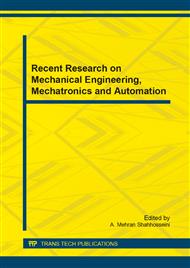[1]
Jinxian Zhuang. Anonymous Evocable Electronic Report System. Shanghai Jiaotong University, thesis, (2008).
Google Scholar
[2]
H. J. Kim, J. I. Lim and D. H. Lee. Efficient and securemember deletion in group Signature schemes. Information Security and Cryptology, 2001, p.150–161.
DOI: 10.1007/3-540-45247-8_12
Google Scholar
[3]
D. Song. Practical forward secure group Signature schemes. Proc of the 8t ACM Conference on Computer and Communications Security, ACM, 2001, p.225–234.
DOI: 10.1145/501983.502015
Google Scholar
[4]
Yanli Zhang, Jiayong Liu. Design and Implementation Based on ECC Digital Signature System. Information security and communications confidential, 2011, No. 5, p.86–90.
Google Scholar
[5]
S. Bhattacharys, S. K. Ghosh. An artificial intelligence based approach for risk management using attack graph[C]. 2007 International Conference on Computational Intelligence and Securit, 2007, p.794–798.
DOI: 10.1109/cis.2007.145
Google Scholar
[6]
R. Anderson. Low cost at tacks on tamper resistant devices[C]. Fourth Annual Conference on Computer and Communication Security, ACM, 1997, p.125–136.
Google Scholar
[7]
N. Koblitz. Good and bad uses of elliptic curves in cryptography. Moscow Mathematical, 2002, Vol. 1, No. 2, p.693–715.
DOI: 10.17323/1609-4514-2002-2-4-693-715
Google Scholar
[8]
T. ElGamal. A public key cryptography and signature scheme based on discrete logarithms. IEEEE Thansactions on Infrmation Theory, 1985, no. 4, p.469–472.
DOI: 10.1109/tit.1985.1057074
Google Scholar
[9]
R. Rivest, A. Shamir and L. Adleman. A method of obtaining digital signatures and public-Key cryptosystems. Communications of the ACM, 1978, No. 21, p.120–126.
DOI: 10.1145/359340.359342
Google Scholar


